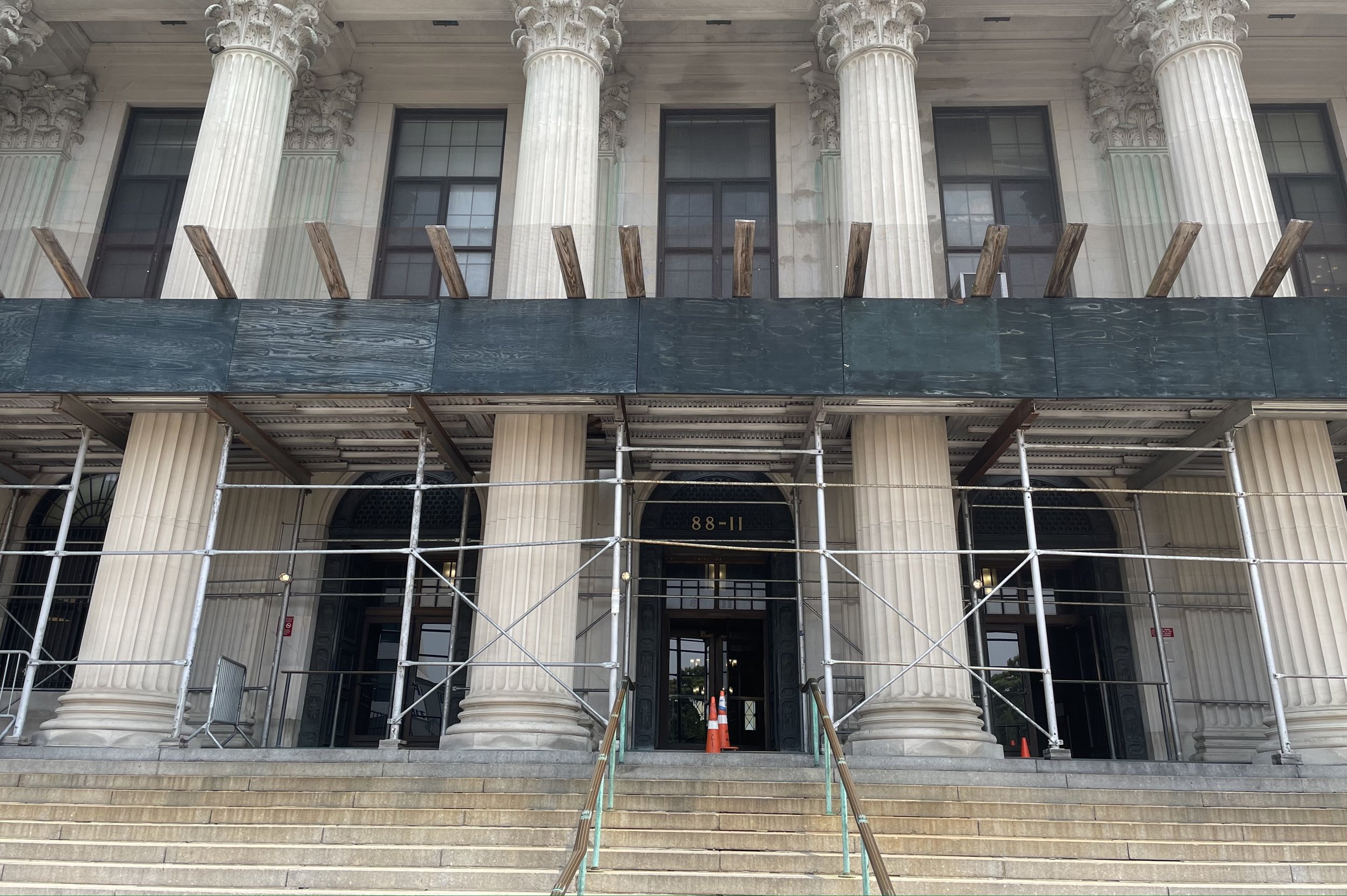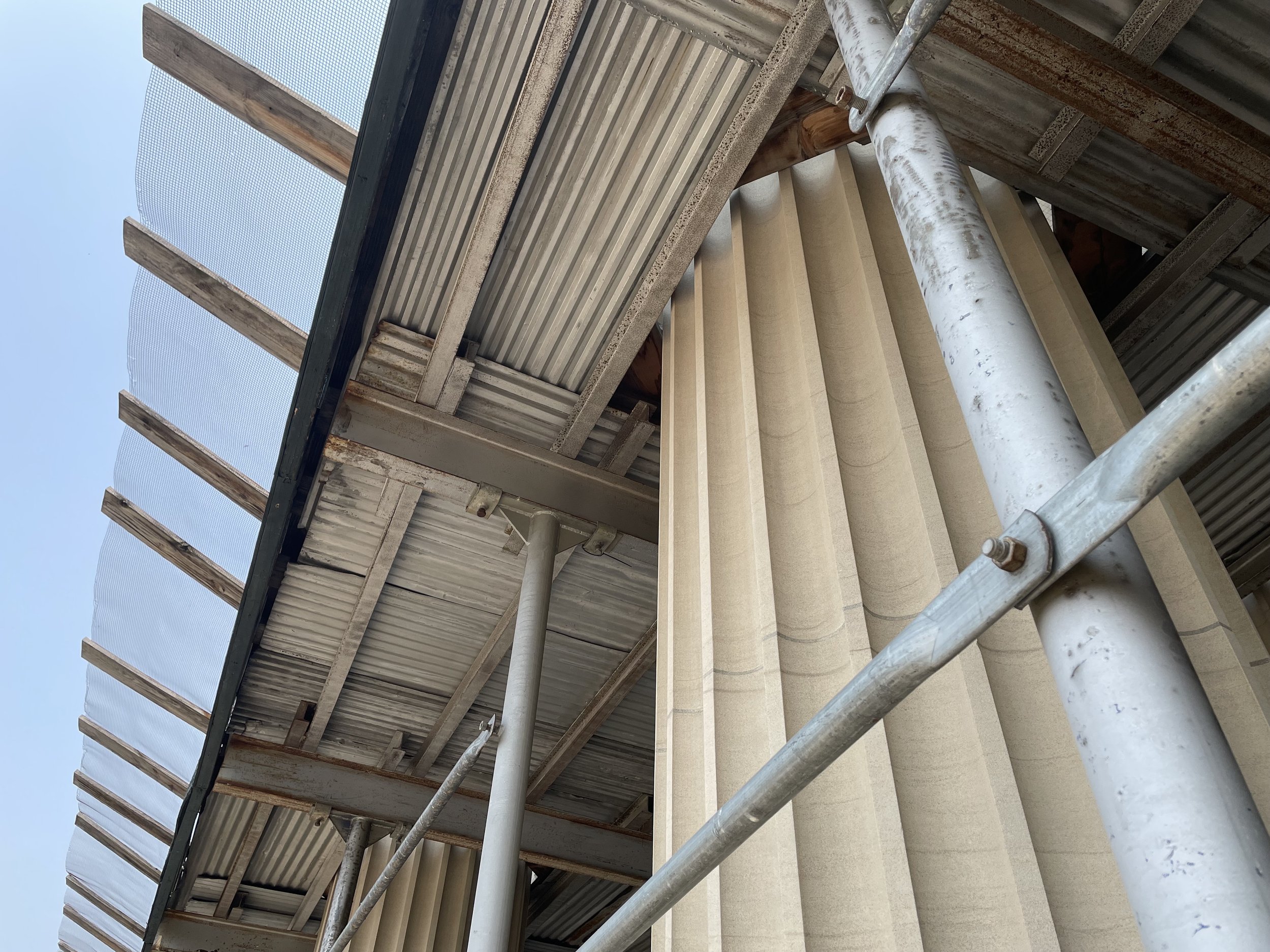Scaffolding at Queens Supreme Court has cost city nearly half a million dollars
/The scaffolding outside of the Queens Supreme, Civil Term courthouse has been in place for 14 years and has cost taxpayers nearly half a million dollars to maintain. Eagle photo by Jacob Kaye
By Jacob Kaye
Scaffolding is a daily fixture in the lives of most New Yorkers – but nowhere is that more true than at the Queens Supreme Courthouse in Downtown Jamaica.
Wrapped around the front of the 90-year-old building is a sidewalk shed that has marked the neoclassical courthouse for over a dozen years. Courthouse visitors, judges, court staff and court users have, for the past 14 years, descended the court’s steps only to find themselves under the scaffolding, which is built around the building’s eight two-story columns.
But it’s not just an eyesore – over the years, the shedding has cost taxpayers nearly half a million dollars, and has frustrated judges and court staff who work at the courthouse located at 88-11 Sutphin Blvd.
The Department of Citywide Administrative Services, which owns the building and is responsible for its upkeep, says it has no immediate plans to remove the scaffolding.
The agency also does not have a projection for when the project the scaffolding was built in connection with will move forward.
“I'm concerned about the scaffolding,” said Marguerite Grays, the administrative judge in Queens Supreme Court, Civil Term. “I wouldn't necessarily say frustrated, but I am concerned.”
“I would like to see whatever movement we can make to either get the project completed or the scaffolding removed,” Grays added.
The scaffolding was first installed in 2009, when DCAS found that some of the building’s Alabama limestone facade was crumbling. The agency, which manages all courthouses in the city, decided that it would install the scaffolding to protect people from falling pieces of the facade, while also embarking on a project that would see the facade repaired.
However, 14 years later, the agency has yet to secure the funding for the project, which is expected to cost at least $30 million. The project would require capital investment, according to a DCAS spokesperson.
In all, the agency has also spent $445,000 to maintain the shedding, which has been managed by several contractors over the years.
The scaffolding has also grown. During the first 10 years of the shedding, it only covered the main entrance of the building. It now covers nearly the entire front facing portion of the courthouse.
“The safety of all New Yorkers remains our top priority, and as such it remains necessary that we keep the shedding up at the Queens County Courthouse,” a DCAS spokesperson said in a statement.
“We look forward to its removal when we can safely address the conditions around the building,” the spokesperson added.
According to a Queens Supreme Court staffer familiar with the scaffolding project, film and television productions that filmed in front of the courthouse over the years paid for the scaffolding to be removed and rebuilt after shooting had been completed.
That same staffer said that courthouse officials have had difficulty getting information about the status of the project from DCAS.
Grays, who has served as the top judge in the court since 2020 and who has served as a judge in the court for two decades, said that while she has previously spoken with officials at DCAS about the project’s status, she has not recently received an update on the project.
The scaffolding outside of Queens County Supreme Court, Civil Term.Eagle photo by Jacob Kaye
“It’s an issue that we have discussed with DCAS, and we will continue to discuss with DCAS to see what if any news we may learn as it relates to the scaffolding and or the project that the scaffolding was originally built for,” Grays said. “But at this point, I don't have any further information about that.”
And while Grays would like to see the project completed and the building returned to its past glory, she said she also understands and agrees with the need to keep people safe from potential falling debris.
“We want to make sure that it's safe for those who are passing on any side of the building,” Grays said. “That’s the purpose of the scaffolding. I don't want any members of the public or members of this court family injured.”
“It’s a beautiful building, and, of course, we want the building maintained,” she added.
The courthouse, which houses the borough’s Supreme Court Civil Term, Surrogate’s Court and the Queens County Clerk’s office, was built in 1936.
Originally called the Queens General Court, the building was built through the Works Progress Administration and cost around $5 million to construct.





